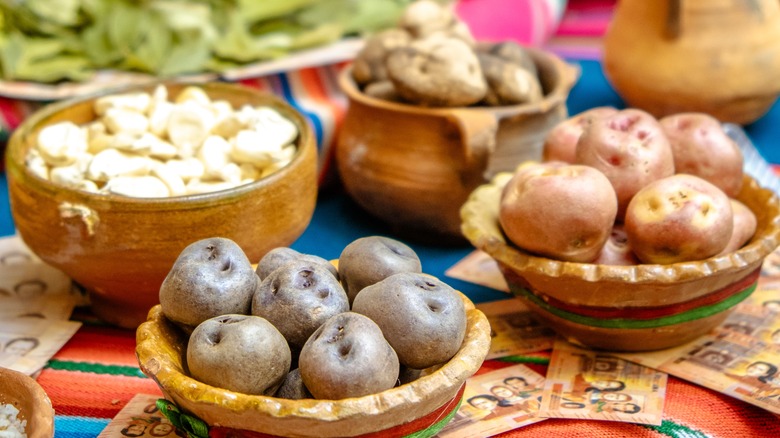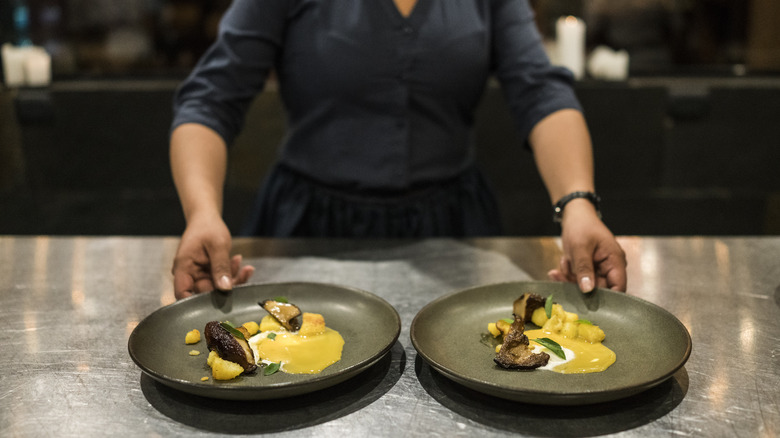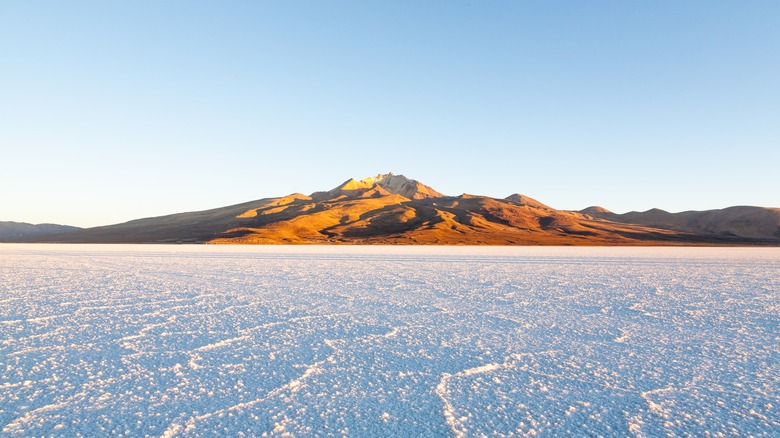The Unexpected South American Country Foodies Should Add To Their Bucket List
South America is home to over 400 million people in a dozen countries, with each of them offering an endless amount of cultural gifts, ranging from food, forests and ancient artifacts. Beyond the trendy tourist hubs like Brazil and Colombia, is Bolivia, a country every foodie should add to their bucket list. It's also the perfect South American country to visit for a budget-friendly vacation.
Named after Simón Bolívar, a leader during the Spanish-American Wars for Independence, Bolivia is a small landlocked country located in central South America. While the capital city of La Paz, which is overlooked by Mount Illimani, boasts three of the top 100 restaurants in Latin America per 50 Best, the entire country is in the midst of a food revolution. The culinary movement features a generation of young chefs crafting dishes that focus on Bolivian culture and the concept of "zero-kilometer cuisine," defined by a hyper-focus on local products, creating a wider community with ranchers and farmers. Any future South American adventure should include Bolivia high on the list of destinations. Visiting now will make you a pioneering foodie, as you'll come back home with enough restaurant stories to make all your friends jealous.
Tradition meets trendy
One of Bolivia's greatest restaurants is Gustu (which translates to "flavor" in Quechua, the local language). Gustu is the result of gastronomic entrepreneur Claus Meyer's non-profit, Melting Pot Bolivia, an organization established to showcase the country's food culture and promote sustainability. After having established a Michelin three-star restaurant in Copenhagen, Meyer wanted to mix Nordic and Bolivian cuisine, all while respecting the native culture and enriching people's lives. Unique local ingredients that comprise the menu include mangaba (a sweet fruit only found in this region), fermented yucca (a plant believed to have several health benefits), Amazonian fish, and even alligator. For those who have never tasted alligator and are a bit weary, fear not, as you'll find that the reptile tastes a lot like chicken.
If you're in the mood for tradition, Bolivia and its neighboring Andean countries are home to over 4,000 potato variations, all with unique colours, flavors, and characters. Potatoes logically have a prominent role in Bolivian cuisine, with traditional dishes such as chuño, a complex dehydrated, freeze-dried regional specialty made from a certain type of bitter potato, remaining relatively unheard of in the rest of the world. You can try a version of this national specialty at high-end restaurants, including Gustu, or find it in small local restaurants and farms throughout the country.
Discovering Bolivia beyond La Paz
Sucre, the nation's judicial capital, is a treasure trove of Colonial architecture and a subtropical mountain climate. While Sucre isn't as fast-paced as La Paz, the city's food scene is slowly but surely catching up to that of the capital. Here, you'll find a mix of trendy cafes and more traditional restaurants, with El Solar, featuring a very affordable seven-course meal, being a standout. Located 300 miles south of La Paz is Uyuni, which is primarily known for its salt flats. Here, adventurous tourists can visit Salar de Uyuni, the world's largest salt flat, sitting at a whopping 11,995-feet above sea-level. (Hot tip: Visit this destination in January for the best photos.)
Be sure to dine at Tika, Bolivia's self-proclaimed "first multi-concept restaurant," located inside Palacio de Sal, a hotel built entirely of salt. Tika has struck a balance between global and local dishes, aiming to create an experience like no other. Make sure to try the pork confit, a mouth-watering dish of pork ribs with tomato pebre sauce and parsley served with sweet potato puree and spicy peppers stuffed with corn on the cob and cheese.
In terms of fame, quinoa is perhaps Bolivia's most well-known cultural export. The grain thrives in adverse conditions but grows in more than 120 varieties across the nation, including the deserts around Uyuni. Historically, Spanish conquistadors attempted to control the local Indigenous populations by banning quinoa, as it was used in non-Christian ceremonies. However, history has come to make this protein-rich grain a staple in Bolivian new-wave cuisine and a popular health food around the world. With all this in mind, make sure your next South American adventure has at least a few days reserved for Bolivia, a secret paradise for the pallet.


